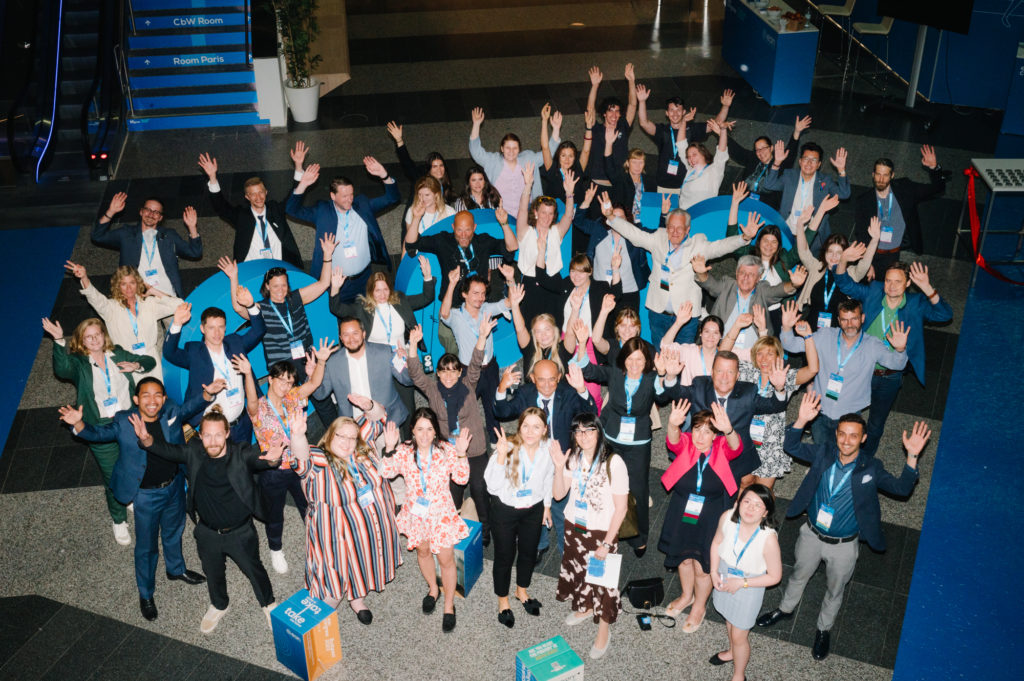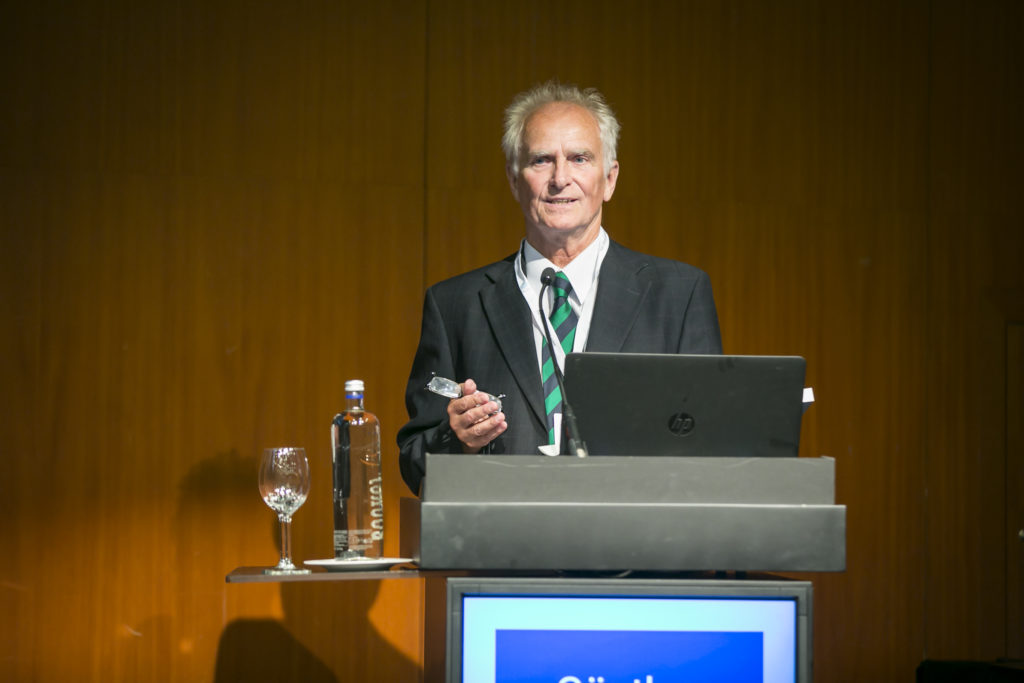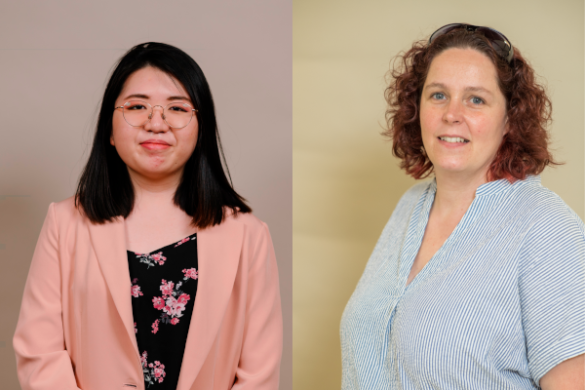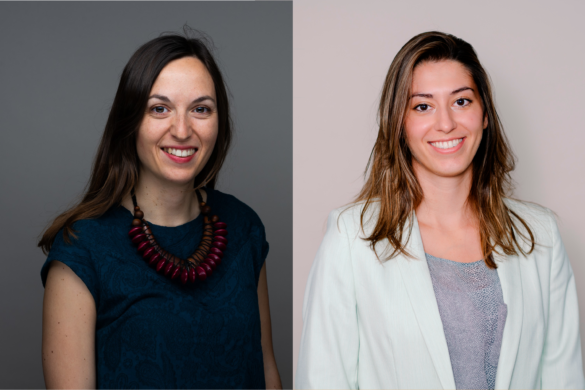by Magda Dohnalová
I never wanted to work with people, I always wanted to work with animals.
I never wanted to be self-employed, calculate taxes and all the other horrible things that come with it.
When I lost my job in 1998 and couldn’t find anything, my mom called me saying that a professor from her hospital was looking for a secretary to take care of students and help him with his agenda related to his position as Secretary General of the European Federation of Neurological Societies (EFNS). I thought ‘why not give it a try?’ I hoped I would manage to write a few letters. The admission interview went well and that is how my work with neurologists began. First with medical students at the 3rd Faculty of Medicine, Charles University in Prague, and from January 1999 also with the EFNS. This turned my life completely upside down. When Prof. Pavel Kalvach took me to Vienna for the first time, the EFNS administrative office were a group of four people: executive director Dr. Uschi Tschabitscher (an amazing and lovely personality), Lisa Müller, Eveline Sipido in Florence, and me in Prague. At that time, the EFNS was based in the Rosenhügel Hospital.
Since Prof. Kalvach always emphasised education, an idea arose to organise an international course for neurologists at the beginning of their careers. And so, the Academy for young Neurologists (now called the EAN Spring School) was born. In the spring of 2000, the first course took place at the Třešť Castle in the Czech Republic. Representatives of 15 European countries were invited here to map the state of neurology – the education system, the provision of ambulatory and hospital care and the scientific activity. My job was to organise this whole meeting. It was a big challenge for me because I had never done anything like this before. I struggled from the beginning with a lot of bureaucracy (mainly related to the invitation of participants from some Eastern European countries). I was in charge of arranging accommodation, transport, the cultural programme, and everything related to the organisation of the meeting. I had to figure out all kinds of incomprehensible letters and names, solve complications with undelivered visas, push application deadlines at embassies, ask embassies to help them, wrangle with insurance companies – all so that in the end those 120 people could happily sit in the auditorium every year and have fun with excellent lectures. So that they can also absorb the friendly atmosphere that my team always provided. So that they can wonder how people of different nations can be called to sing together – and enjoy all those beautiful moments. Over time, I created a system to manage it all, thanks to the great help of Prof. Kalvach, doctors from our clinic (in the beginning by Assoc. Prof. Aleš Bartoš and then mainly by Dr. Jiří Keller) and thanks to the huge support of my husband and later of my sons.
Due to organisational reasons, after two years in Třešť, the course was moved closer to Prague, to northern Bohemia, to Staré Splavy, a romantic landscape on the shores of Mácha Lake. The content of the course has also changed and settled down to three days devoted to three different neurological topics (see more info on the past courses in the EAN Archive).

EAN course participants at Stare Splavy, 2007 
EAN event participants at Stare Splavy, 2013 
(left to right) Anja Sander, Magda Dohnalova, Julia Püringer, Pavel Kalvach, Eveline Sipido, Lisa Müller 
Rollin´ Fifties performance at EAN course, Stare Splavy, 2013 
EAN course participants at Stare Splavy, 2015 
EAN course participants at Stare Splavy, 2016 
(left to right) Eberhard Deisenhammer, and four EFNS presidents: Jes Olesen, Franz Gerstenbrand, Jacques De Reuck, Wolf-Dieter Heiss 
Lord Walton (4th from left) 
EFSN Booth at a Congress in Florence, 2009 
Joint EFNS/EAN congress in Istanbul, 2014 
EAN staff preparing for the EAN Annual Congress in Oslo, 2019 
EAN Board and staff at the EAN Annual Congress in Vienna, 2022 
EAN Education Department team, 2022
Meeting young people, many of whom were abroad for the first time at that time, was very interesting. We had the opportunity to compare many different cultures, opinions, and life conditions – illustrated also by application/success possibilities. From the beginning, participants from Eastern and Central European countries prevailed, later also neurologists from the whole of Europe joined the courses and moreover even those from Institutional Member countries from Africa and Asia.
These young people had and took advantage of this attractive opportunity and have made many friendships. As far as I know one of those friendships turned into marriage. It was great to watch the professional growth of these young people. Some of them later became leading personalities in their specialty, working their way up to be deans, professors, representatives at universities and hospitals or neurological societies of their countries. Some also became involved in various functions in the EFNS and EAN, becoming my collaborators and co-organisers. They also became lecturers at our Spring and Autumn schools, Regional Teaching Courses or congresses. This brought me great satisfaction and joy that our work and all our efforts had and still are having results.
All this would not have been possible without the huge number of doctors and professors who lectured and were willing to share their knowledge. Not only at these courses, but also at congresses, I had the opportunity to meet leading personalities from the world of neurology. I will never forget meeting with Prof. Franz Gerstenbrand and his stories about his elephant somewhere in Burma. I also met Prof. Vladimir Hachinski, James Toole, Johann Aarli, Lord John Walton, Wolfgang Grisold (presidents of the WFN) and I have worked with some of them for many years.
I must not forget the great support of the management of the EFNS and EAN and especially my colleagues from the office, mainly Anja Sander and Julia Mayer, who have become good friends.
Throughout the time, the office moved several times and finally acquired a beautiful residence in the centre of Vienna. The agenda the Head Office is now in charge of has increased many times. Hand in hand with the growing agenda, the team of collaborators also grew to the current number of 40 staff members.
How has neurology changed during this time? I can’t judge that, but I can see how the work related to the organisation of education has changed. From paper letters and faxes, slides, to almost everything in electronic form. Also, face-to-face meetings have changed a lot to various video conferences, Zoom meetings (of course very much influenced by the global health situation), which is a great pity. Of course progress cannot be stopped, but nothing can replace talking to someone face to face, having fun, getting to know foreign countries and cultures, and this is simply wonderful.
And finally some numbers:
I had the opportunity to meet 8 EFNS and EAN Presidents and cooperate with 3 Executive Directors.
There were 2,300 participants from 64 countries of Europe, Asia and Africa and 229 lecturers at my 23 Spring schools courses.
I corresponded with hundreds of grant applicants, 1,028 grantees within the Department to Department and Clinical Fellowship programmes.
I had the opportunity to visit some Regional Teaching Courses (Yekaterinburg, Petrozavodsk, Tbilisi, Yerevan, Szeged) and to work for 23 congresses throughout the whole of Europe.
I find neurologists a special kind of people, but I like them. And I was happy to have the opportunity to experience all this.
Thanks
Magda Dohnalová
See also: Magda’s Staff Profile
















